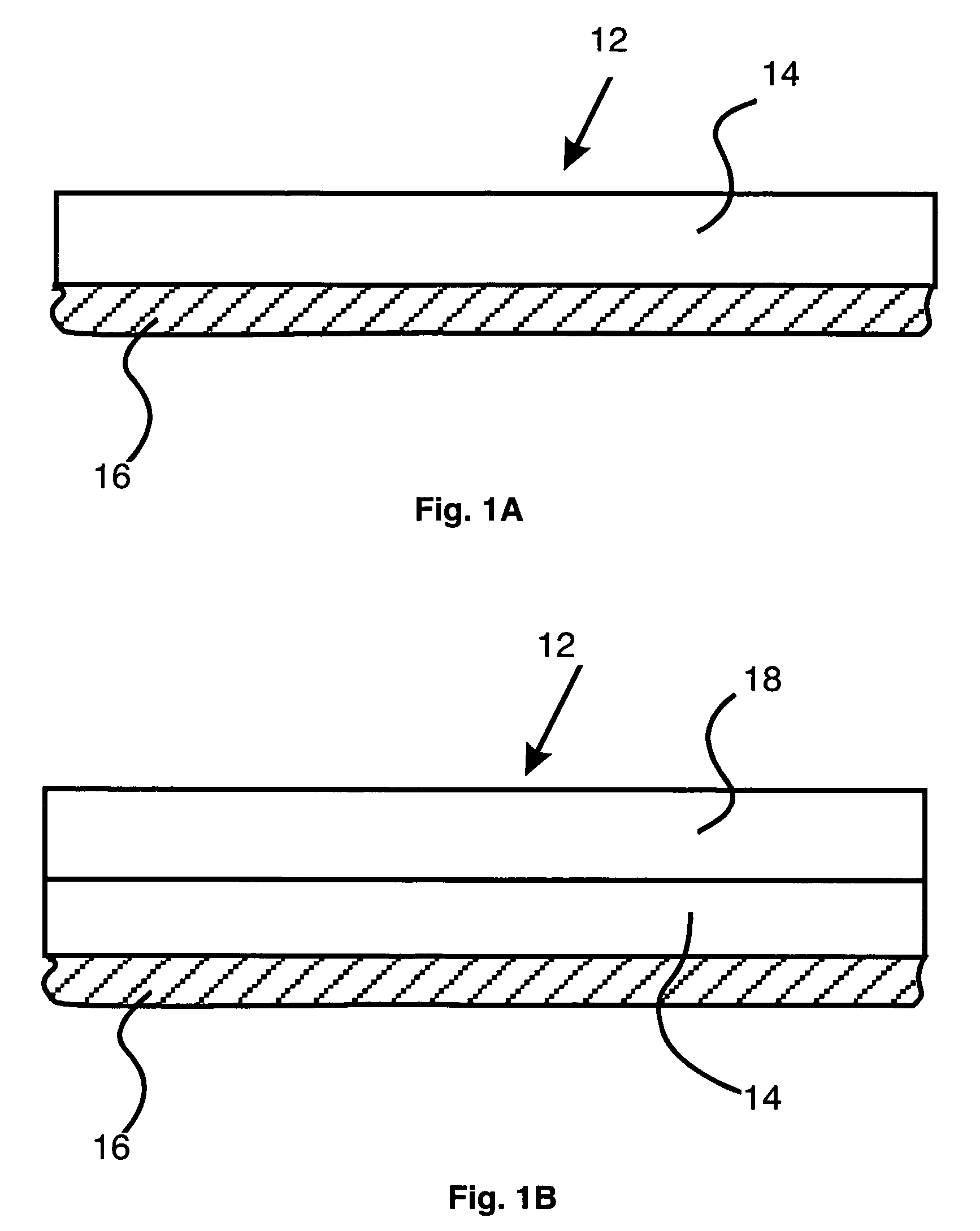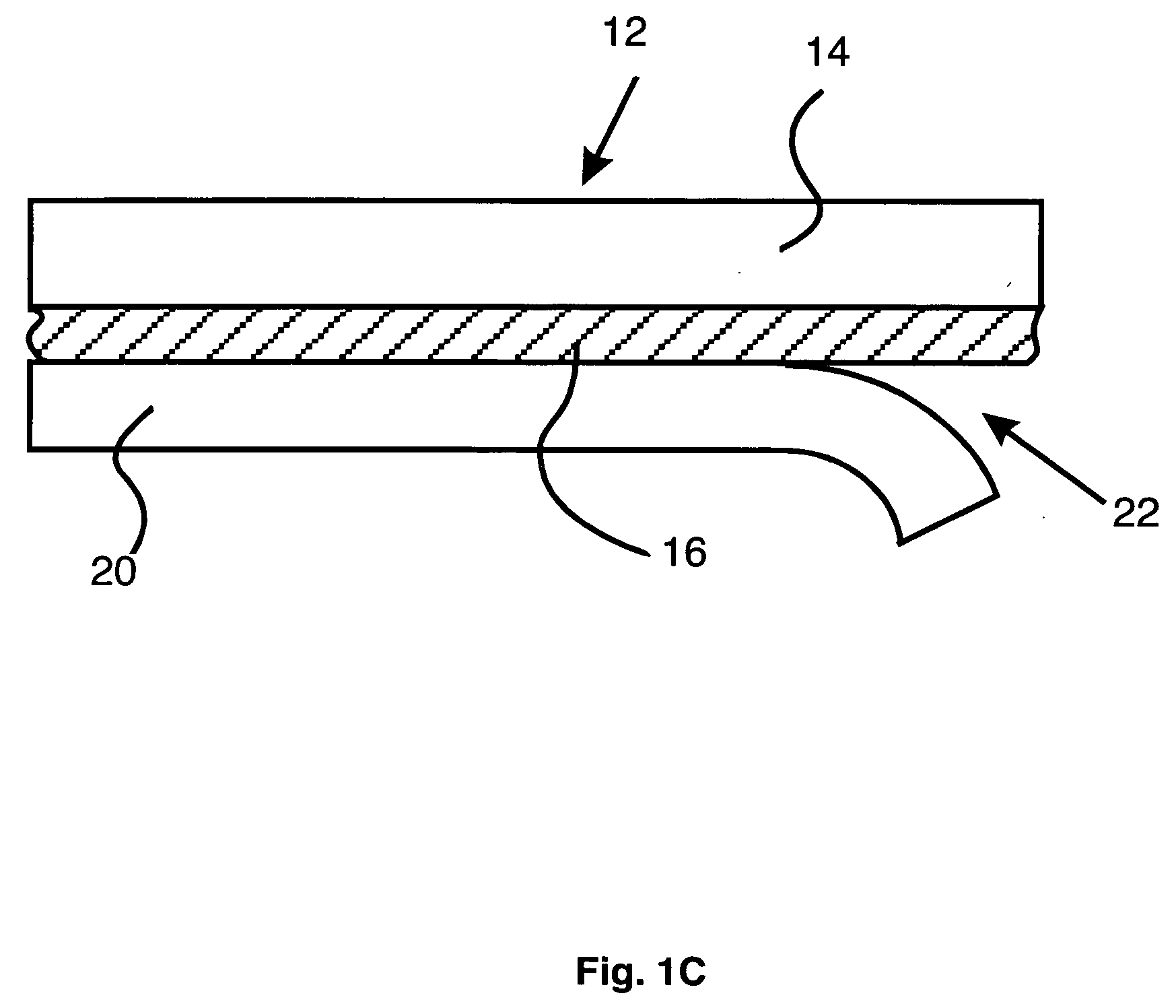Adhesive laminates for rapid wound occlusion
a technology of adhesive laminates and wounds, applied in the field of adhesive laminates for rapid wound occlusion, can solve the problems of local trauma, unintentional bonding of human or inanimate applicators, and skin adhesives being s
- Summary
- Abstract
- Description
- Claims
- Application Information
AI Technical Summary
Benefits of technology
Problems solved by technology
Method used
Image
Examples
example 1
Inhibition of Cyanoacrylate Polymerization
[0061] A drop of commercial industrial fast-drying cyanoacrylate adhesive was aliquoted onto a small piece of Parafilm-M (Pechiney Plastic Packaging, Chicago Ill.) and onto a teflon cooking pan and left in ambient room conditions. In each case, the cyanoacrylate failed to polymerize. This result was unexpected as the cyanoacrylate is normally considered to combine with moisture in the air and thereby polymerize when in contact with virtually anything, as long as air is present.
example 2
Flexible Hot-Melt Adhesive
[0062] Several pieces of a gummi-type confectionary (Haribo Gummi-Bears) were slowly melted in a glass beaker at approximately 60° C. A sample of approximately 1 ml was placed on a standard glass microscope slide and another slide was then placed in contact with the molten material, overlapping the first slide by about 1 inch and left to dry overnight. The next day, it was impossible to manually separate the two microscope slides, although a small amount of movement was possible due to the elastic nature of the adhesive.
example 3
Hot-Melt Adhesive Sticks to PTFE
[0063] Approximately 20 g of Haribo Gummi-Bears was slowly melted in a glass beaker at approximately 60° C. A mixture of 75% ovalbumin in water was stirred into the confectionary while it was still molten. Samples of the still molten adhesive was placed on teflon (PTFE) cooking pans and pressed down with a teflon plate weighing 1 kg. In one case, a thin film of mineral oil was spread over the PTFE plate prior to application of the adhesive. In another case, a small amount of plastisizer (5% pullulan) was added to the molten mixture prior to application on the PTFE plate.
[0064] After allowing to cure overnight, the 1 kg teflon plates were removed and an attempt was made to manually remove the adhesive from the underneath PTFE cooking pan. In all cases, the adhesive adhered very strongly to the plate, which is surprising at only a few materials are known to adhere to teflon. The adhesive with plastisizer stuck best and couldn't be removed, while the ...
PUM
| Property | Measurement | Unit |
|---|---|---|
| thickness | aaaaa | aaaaa |
| thickness | aaaaa | aaaaa |
| diameter | aaaaa | aaaaa |
Abstract
Description
Claims
Application Information
 Login to View More
Login to View More - R&D
- Intellectual Property
- Life Sciences
- Materials
- Tech Scout
- Unparalleled Data Quality
- Higher Quality Content
- 60% Fewer Hallucinations
Browse by: Latest US Patents, China's latest patents, Technical Efficacy Thesaurus, Application Domain, Technology Topic, Popular Technical Reports.
© 2025 PatSnap. All rights reserved.Legal|Privacy policy|Modern Slavery Act Transparency Statement|Sitemap|About US| Contact US: help@patsnap.com



